How to Plan the Perfect Adirondacks Vacation in Any Season — Charming Towns and Gorgeous Hikes Included
Here's where to eat, sleep, and play in the Adirondacks.
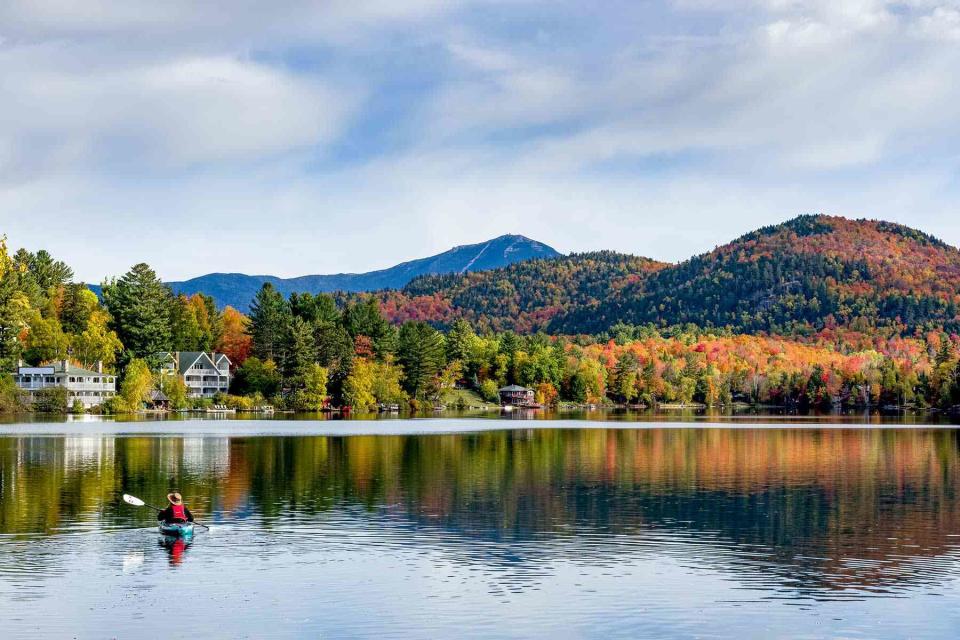
Frank DeBonis/Getty Images
The Adirondacks. Even among New Yorkers, the word can bear confusion. Does it refer to the famous upstate New York wilderness, the mountains of the same name, or the region at large? Answer: all of the above. There’s Adirondack Park, the largest wilderness preserve in the lower 48, whose boundaries are essentially the same as those of the glacier-carved mountains called the Adirondacks. Both the park and the mountain group are considered New York’s Adirondacks region.
A special mix of public and private land, the park is a “forever wild” forest preserve created by the state in 1892. At six million acres, Adirondack Park is bigger than Grand Canyon, Great Smoky Mountains, and Yosemite national parks put together — and then some. Within its borders are rural small towns; thousands of miles of hiking trails, from simple walks in the woods to strenuous High Peaks circuits; and plenty of freshwater lakes, ponds, and rivers begging for a dip, a kayak or canoe trip, or a day of fishing. And it’s all free to explore — no national parks-style fees or passes required.
There are scores of sleepy hamlets, thriving villages, and gorgeous vacation areas to make your Adirondacks home base — here, we break down some of the most popular. Consider this guide a springboard for an awesome, nature-immersed Adirondacks getaway.
Lake Placid
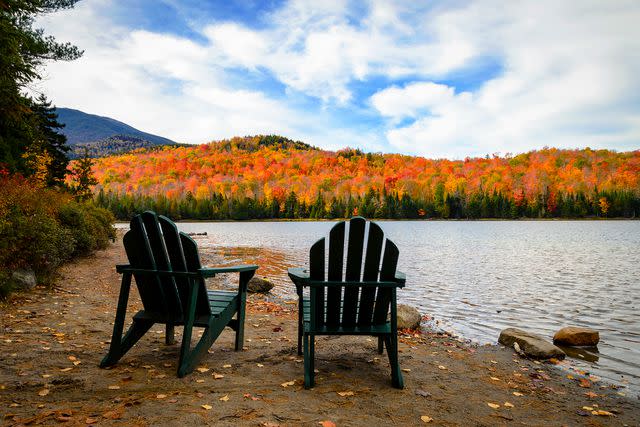
Joseph Plotz/Getty Images
Lake Placid is one of the most famous lake destinations in the country, with not one but two Winter Olympics hosting gigs (1932 and 1980) under its belt. Bygone winter-sports glory may have put it on the map, but the lake town still very much shines on with luxury resorts, a lively village atmosphere, and a dizzying array of outdoor activities. During the summer, there’s boating, swimming, and walking around pristine Mirror Lake, while winter brings out the big dogs: skiing, snowshoeing, fat-tire biking, dog sledding, and ice skating (the open-air Olympic Oval rink looks largely the same as it did in 1932, and it’s simply magical).
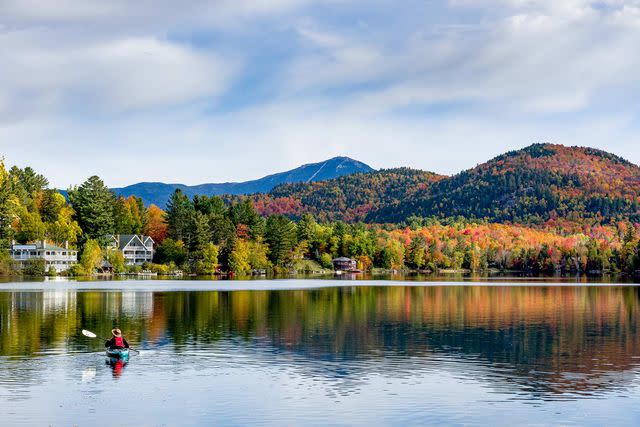
Frank DeBonis/Getty Images
First-timers, take note: The village of Lake Placid is actually on Mirror Lake. The lake Lake Placid is a few miles to the north.
Where to Eat and Drink in Lake Placid
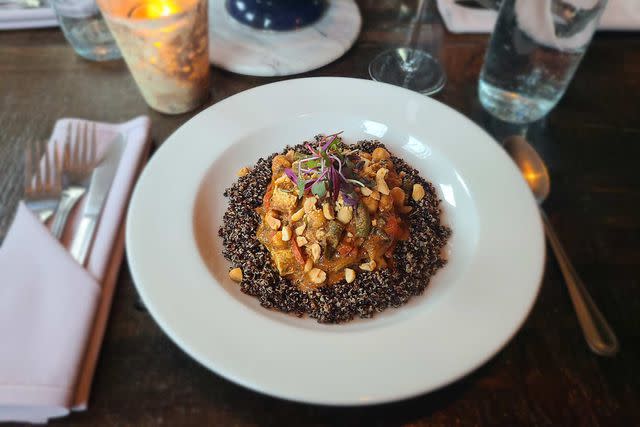
Courtesy of Salt of the Earth Bistro
Salt of the Earth is a regular presence on travelers’ best-of, must-visit lists. The tiny, women-run bistro serves dinner five nights a week, with menu highlights including venison Brunswick stew and grilled Faroe Islands salmon. Another fan favorite in town: Smoke Signals, a barbecue spot with great views of glassy Mirror Lake. Big Slide Brewery & Public House has mass appeal with award-winning ales, build-your-own flights, and a classic pub menu (ingredients are sourced from nearly a dozen Adirondacks farms and producers).
Where to Stay in Lake Placid
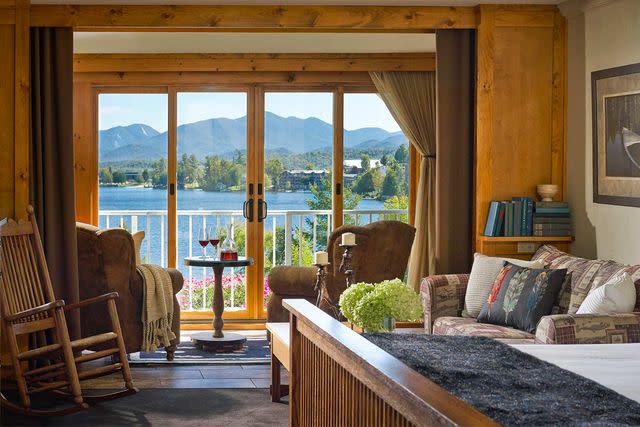
Courtesy of Mirror Lake Inn Resort and Spa
Grand lodges, design-centric boutique hotels, elegant inns — Lake Placid has it all. Each of the 131 rooms at the family-owned Mirror Lake Inn has a view of the lake and the surrounding mountains. After a day on your skis or snowboard, unwind by the giant stone fireplace or in the spa’s hot tub and sauna. The ever-popular High Peaks Resort and the midcentury gem Lake House also offer spectacular lake views.
For the hipster crowd, a 1950s motor inn on the Chubb River has been reborn as Eastwind Lake Placid. The dreamy boutique mountain retreat (and further north offshoot of the Catskills original) plays up chic Scandinavian style in its 26 rooms and eco-luxe cabins. There are also saunas, a pool, a spa, bike/skate rentals, and special events like yoga and live music.
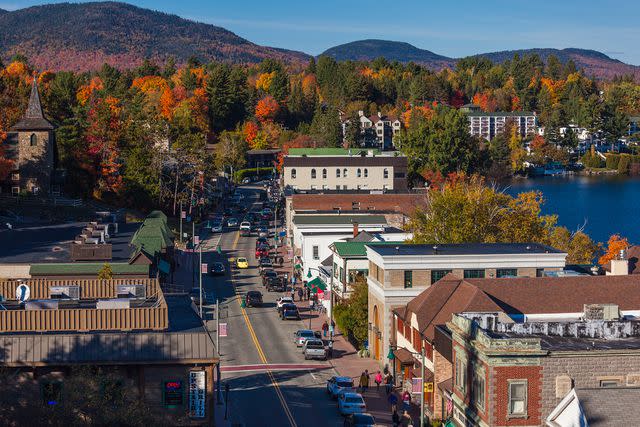
Walter Bibikow/Getty Images
Back on Main Street, the Grand Adirondack Hotel (re)makes its debut this fall after a thorough overhaul. Its origin story goes all the way back to 1897, when it opened as the Northwoods Inn. The revamped hotel recalls the Adirondack Great Camps — the luxurious and rambling 19th-century compounds favored by the super rich.
Whiteface and High Peaks Region
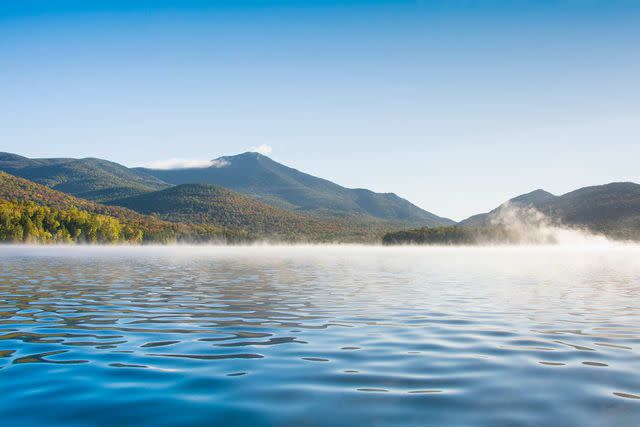
Tetra Images/Getty Images
Quick geography lesson: the Whiteface region is just a hop, skip, and jump up from Lake Placid, only about 20 to 30 minutes by car. It’s anchored by none other than Whiteface Mountain, a favorite of Olympians for its vertical drop — the biggest this side of the Mississippi. In the summer, conquer the mountain via hiking trails or the Whiteface Veterans' Memorial Highway. Once you reach the summit (a cool 4,867 feet), the awaiting panorama reaches as far as Canada. Whiteface is one of the Adirondacks’ High Peaks — mountains ranging from 3,820 to 5,344 feet.
Where to Eat and Drink in the Whiteface and High Peaks Regions

Courtesy of Forty Six
Breakfast and lunch basics are done well at Adirondack Mountain Coffee cafe (for example, the “woodcutters” breakfast platters, piled with eggs, steak, sausage, home fries, pancakes, and a slice of apple pie for good measure).
The Rivermede Farm Market is a can’t-miss stop for baked goods and produce from its 115-year-old farm. Grab sandwiches and baked goods for the trail at Cedar Run Bakery & Market or pull over for a quick burger and a scoop at darling Whitebrook Dairy Bar — a roadside spot little changed since the '60s. If more of a sit-down affair is in order, try the Hungry Trout, a woodsy tavern at the base of Whiteface, or Forty Six, an upscale watering hole whose menu celebrates local bounty.
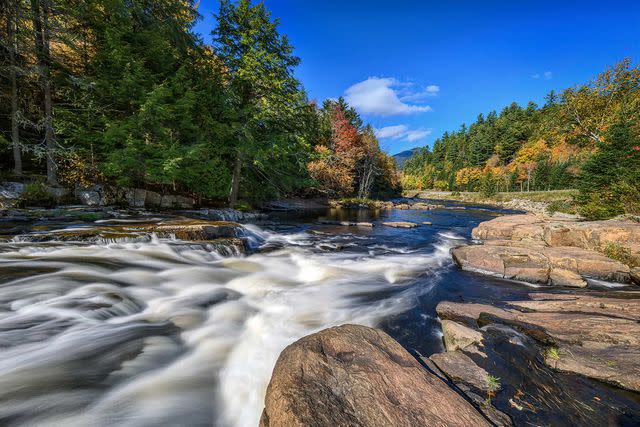
Diana Robinson Photography/Getty Images
Where to Stay in the Whiteface and High Peaks Regions
Local farm stays are the kind of places an Adirondack getaway is built around. Asgaard Farm & Dairy’s 1930s Emerson House (bookable on Vrbo or Airbnb) can sleep four soundly. With a screened-in porch and outdoor dining/grilling area, there are plenty of places for relaxing — and devouring a board of Asgaard’s creamy chèvre and cellar-aged tomme.
Sugar House Creamery’s farm stays include a charming private suite attached to the main farmhouse and a lofted carriage barn, complete with a private balcony overlooking mountain pastures (where the farm’s herd of Brown Swiss cows lazily graze) and the Sentinel Range Wilderness. Either way, you’ll want to stock up on cave-aged cheese and wood-fired fresh bread from Sugar House’s farm store.
Our friend the Hungry Trout restaurant is part of a traditional family-owned motor lodge of the same name. Set right on the banks of the Ausable River, Hungry Trout Resort gives guests step-outside-your-door access to trout fishing and riverside hiking. Gorgeous mountain cabins at Dartbrook Lodge, decked out with features like slate rain showers, gas wood stoves, and upscale Great Camp-style decor, give it their all to fully convert you to Adirondack life.
Saranac Lake
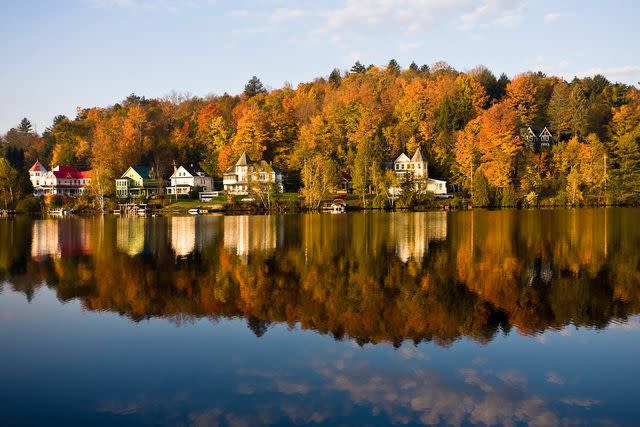
capecodphoto/Getty Images
Just about nine miles from Lake Placid (and less than an hour from the Whiteface region), Saranac Lake is a lovely alternative to its neighbor’s typical high prices and throngs of visitors. Instead of Olympic history, Saranac boasts literary, artistic, and medical fame: Hungarian composer Béla Bartók wrote two concertos in a small Saranac cabin, Sylvia Plath commemorated the area in "In the Mountains" and “The Bell Jar,” and Albert Einstein was a kindly presence around town (and on the lake) in the 1930s and 40s.
Saranac’s cold alpine air and low humidity are similar to Europe’s mountain climates, and in the late 19th century the town found world fame as a health resort for tuberculosis. (A fantastic rainy-day plan is the fascinating Saranac Laboratory Museum, the first lab in the country dedicated to tuberculosis research and care.) Scottish writer and adventurer Robert Louis Stevenson sought relief in Saranac; you can visit the cottage where the “Treasure Island” author resided one famously cold winter in the 1880s.
As for the great outdoors, there’s the usual buffet of Adirondack activities: cross-country skiing on the Jackrabbit Trail; mountain biking or downhill skiing Mount Pisgah; paddling around the Saint Regis Canoe Area, an 18,400-acre network of wilderness lakes, ponds, and canoe routes. Seasoned hikers can try the 6er hiking challenge — trekking the six Adirondack peaks that surround the lake.
Where to Eat and Drink in Saranac Lake
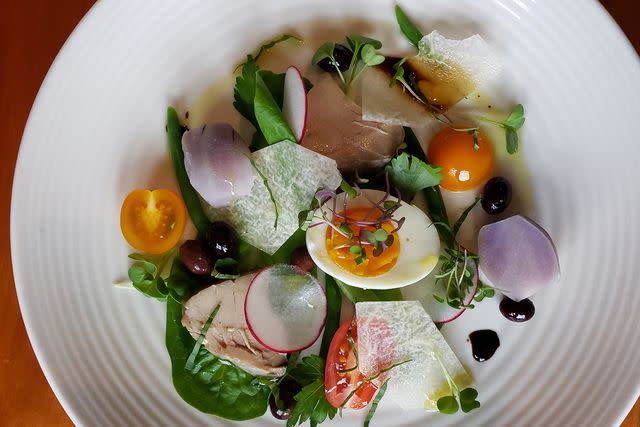
Courtesy of Fiddlehead Bistro
Start your day at Origin Coffee Co. with a breakfast burrito, fresh baked goods, and a morning brew. After you’ve had your fill of outdoor activities for the day, head to Left Bank Cafe, a local darling for French dishes like pan-seared salmon and beef bourguignon, or The Fiddlehead Bistro, an art-filled charmer with a daily changing menu (with any luck, it’ll list homemade gnocchi and pepper-crusted sirloin from nearby Donahue's Livestock Farms the night you visit).
Where to Stay in Saranac Lake
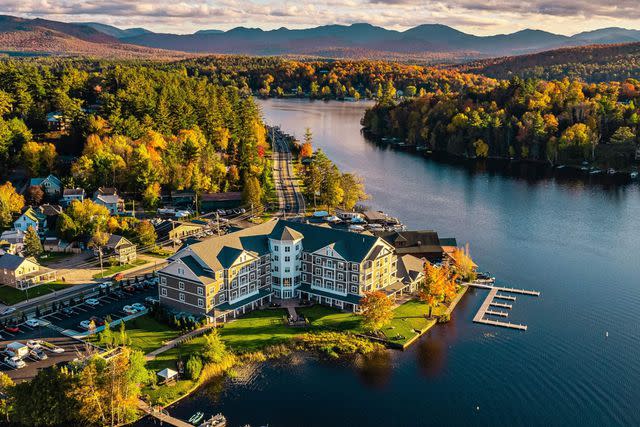
Courtesy of Saranac Waterfront Lodge
Saranac Lake has a good mix of camping options, quaint inns, and cottage and cabin rentals. You’ll even find campsites on Saranac Lake’s islands, accessible only by boat and bookable through ReserveAmerica.com. For a more traditional stay, check out the LEED-certified Saranac Waterfront Lodge or the Hotel Saranac, a 1920s landmark with a cozy Great Hall bar below a wonderfully ornate ceiling that looks straight out of an Italian palazzo. Or, go big at The Point, a majestic property originally built in the early '30s as Camp Wonundra — William Rockefeller Jr.’s Great Camp — and eventually the first Relais & Chateaux hotel in North America.
Lake George
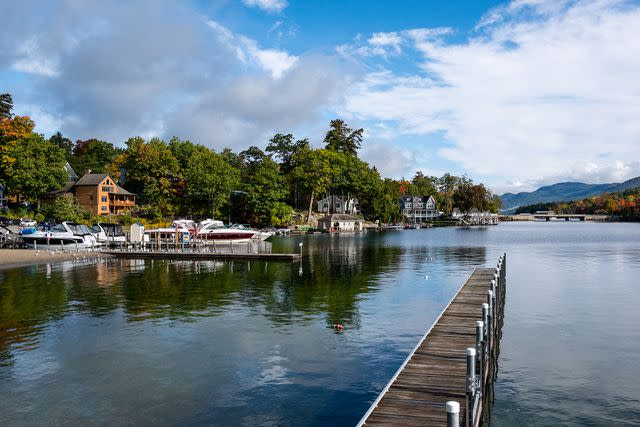
Amy Sparwasser/Getty Images
It’s hard to resist the siren call of Lake George in the summertime — business magnate John D. Rockefeller and artist Georgia O'Keeffe flocked to this southern Adirondacks haven once upon a time. Fresh air and natural beauty are the obvious draws, with a wealth of activities only adding to the pot: hiking, kayaking, scenic steamboat cruises, farm and distillery tours, and more. About a 30-minute drive northwest gets you to Gore Mountain — New York’s biggest ski area — where you can hike, mountain bike, and enjoy scenic sky rides in the summer and fall. Once the temps drop and fresh powder hits, strap on your winter gear of choice and slice down Gore’s trails and glades.
Where to Eat and Drink in Lake George
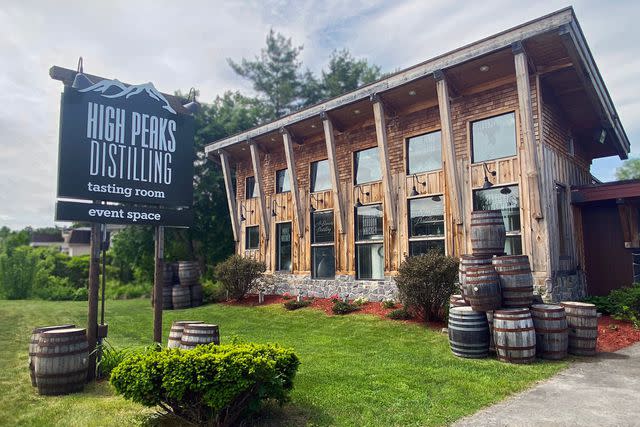
Courtesy of High Peaks Distilling
You’re in central New York, but could be forgiven for thinking you’re 150 miles north in French-speaking Canada at Bistro LeRoux, a cozy French-American eatery with seasonal menus (the braised short ribs and truffle fries are especially delicious after a long day on the trails). Or, trot over to The Hitching Post, Nettle Meadow Farm’s restaurant and cheesemaking kitchen, for a sampler platter of award-winning artisanal cheese. On the booze front, zero in on Lake George village’s main street and you’ve got High Peaks Distilling, Lake George Distilling Company, and Adirondack Winery in a half-mile span.
Where to Stay in Lake George
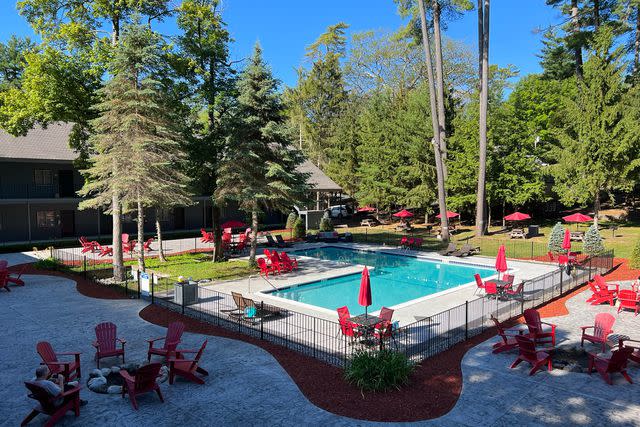
Courtesy of Stone Gate Resort
With lakeside resorts, motels, inns, yurts, and camping and glamping sites (check out Hipcamp, Tentrr, and, to camp on one of Lake George’s islands, ReserveAmerica.com), there’s no shortage of places to stay in Lake George — though you’d be shocked how quickly they book up in the summer.
The palatial Sagamore Resort dates back to the early 1880s (i.e. the dawn of tourism in Lake George). Listed on the National Register of Historic Places, the property features a luxe spa and lake-view dining. Stone Gate Resort is a popular pick for its proximity to Adirondack Park (it’s right at the south entrance) and variety of accommodations (hotel rooms, family-friendly suites, private cabins).
Tupper Lake
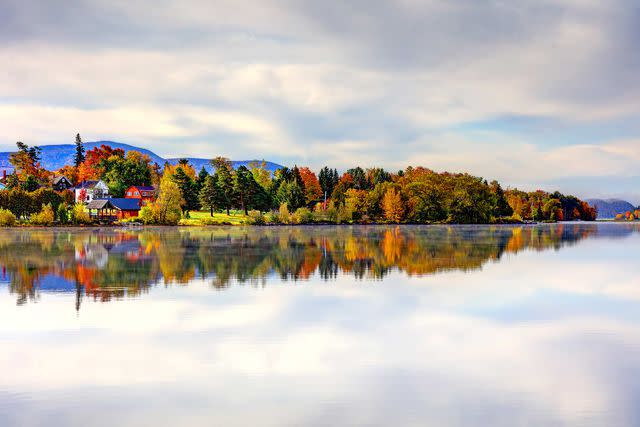
DenisTangneyJr/Getty Images
Don’t let Tupper Lake’s small size and rustic charm fool you. It’s base camp to mountain trails, waterfalls, and breweries, but also The Wild Center, a 115-acre outdoor natural history museum with the Adirondacks’ only treetops walk, and the Adirondack Sky Center & Observatory, a stargazing hub offering public observing events — you might just see the Milky Way.
Where to Eat and Drink in Tupper Lake
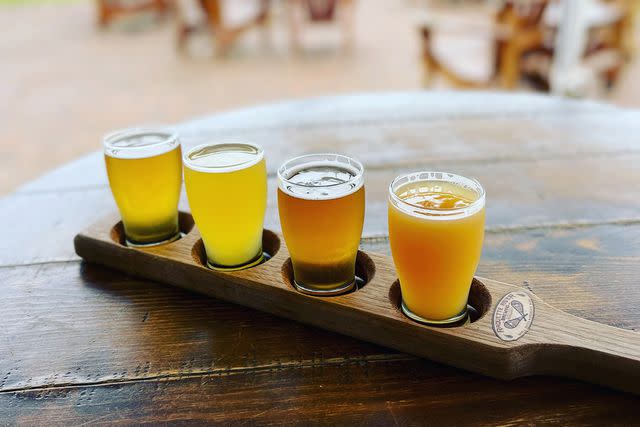
Courtesy of Raquette River Brewing
With live music, a dog-friendly policy, and a food truck “alley” with tacos and wood-fired pizzas, Raquette River Brewing is a major crowd-pleaser. Small-batch ales include the flagship mango wheat ale, made with mango puree, and the maple cream porter (and possible stand-in for dessert?), brewed with local milk sugar and maple syrup. And at least for the novelty of it, visit Washboard Donut Shop and Laundromat for a crispy homemade doughnut and a cup of coffee.
Where to Stay in Tupper Lake
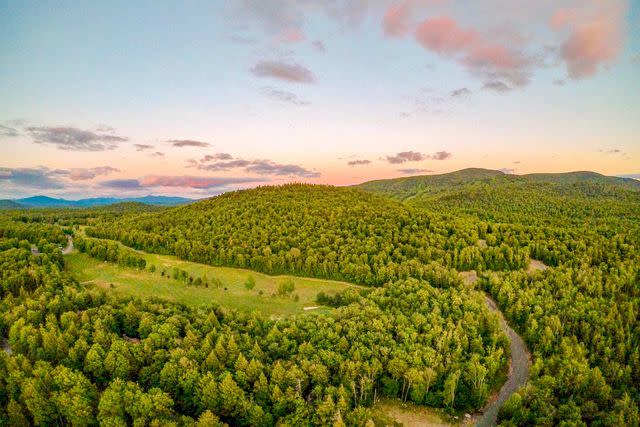
Karen Timmons/Getty Images
Motor lodges are having a moment. Thanks to a renovation under its new owner, the Weekender hotel group, the once-old-school Shaheen’s Adirondack Inn now offers an updated spin on classic roadside accommodations. Facelift aside, at its core, the motel shines for its proximity to hiking, canoeing, and snowmobiling in the winter — there’s even direct snowmobile trail access.
Lake Champlain Region and Adirondack Coast
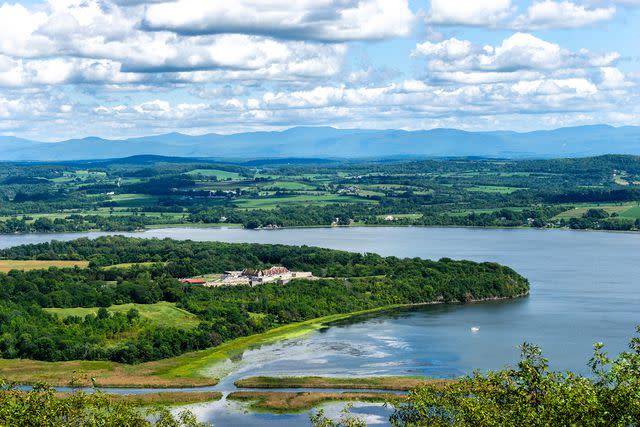
miralex/Getty Images
Bound by its long, skinny lake (the natural divide between New York and Vermont) and the eastern Adirondacks, the Lake Champlain region is defined by rural small towns, lakeshores, and some of the prettiest farmland you’ll ever see. This neck of the Adirondacks makes an appealing escape for those looking for breweries, creameries, farm stands, and nature-based activities on land (hiking and cross-country skiing trails, mountain biking Otis Mountain) or on the water (paddling the namesake lake and backcountry ponds, rafting the Ausable Chasm).
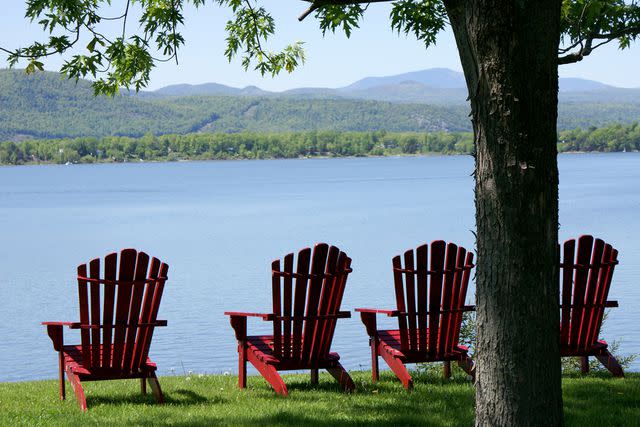
MaggieMarvin/Getty Images
This region is a great pick for history buffs — both Fort Ticonderoga and Crown Point State Historic Site saw critical action during the American Revolution, and the lake itself was once the main route for merchant, trader, and traveler types shuttling between Montreal and New York City. For a good North Country home base, consider the towns of Essex, Peru, and Keeseville.
Where to Eat and Drink in the Lake Champlain Region and Adirondack Coast
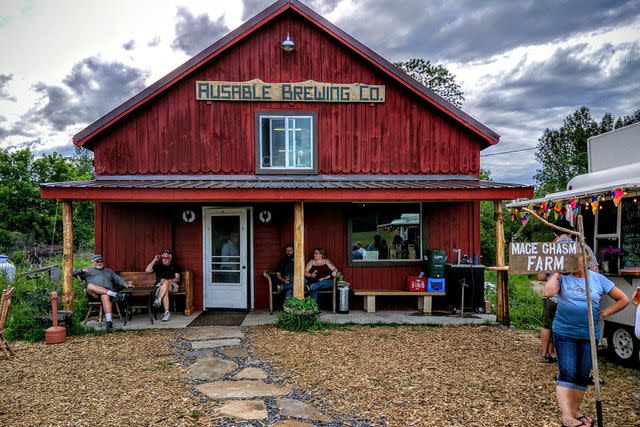
Courtsy of Ausable Brewing Company
After exploring the mightly Ausable Chasm — the so-called Grand Canyon of the Adirondacks — unwind in the beer garden, crisp pilsner in hand, at the brothers-owned Ausable Brewing Co. When you’re ready to eat, there’s farm-to-fork fare from rotating food trucks. While you’re in the area, stock up on eggs and dairy goodness from North Country Creamery‘s farm store and charcuterie and meats from Mace Chasm Farm’s butcher shop (check the farm’s calendar, as you might happen upon a barn show with New Orleans-style live music and dancing). Pin the Juniper Hill Farm store (seasonal) in Wadhams and The Hub on the Hill in Essex for more Adirondack provisions.
Where to Stay in the Lake Champlain Region and Adirondack Coast
Tap into Lake Champlain’s historic side at the Essex Inn, a lakeside stay in business since 1810 (when the town of Essex was the lake’s busiest port). Today, the inn has 11 refined and one-of-a-kind rooms with nice features like mantle headboards and gas log fireplaces. A stay here is not complete without one meal of seafood stew and lobster ravioli at the inn’s delightfully cozy tavern.
Mace Chasm Farm offers a solar-powered cabin with a private free-standing sauna, hot outdoor shower, and beautiful views of the surrounding pastures and mountains. Or, if you want more space and even bigger views, it’s tough to beat the ranch home at Beebe Farm, a fourth-generation sawmill and farm. From its front porch, behold Lake Champlain, the Adirondacks, and Vermont’s Green Mountains.

